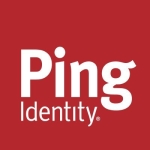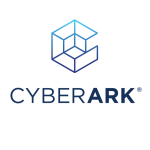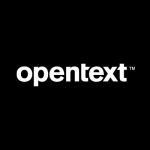What is our primary use case?
My company has a lot of use cases for One Identity Manager. In my previous company, I've been maintaining the tool, so I used to go to clients who needed improvements and support in terms of provisioning, and I provided those services. Now, in my current company, I'm in the Identity Management team, and my company is using its old Identity system with One Identity Manager, particularly for provisioning, access management, compliance, and certification, apart from identity management.
What is most valuable?
In terms of what the most valuable feature of One Identity Manager is, that would be hard to say because the tool is great overall. There's not really one feature you'd prefer over other features, but what's really great, in my opinion, is the fact that the provisioning is really stable and accurate, and it's a process my company trusts. This means that without a lot of maintenance, I can be pretty sure that as soon as my alternative source gives a new identity or gives new information about a particular identity, everything will be transformed and executed the right way. My company has tried other solutions and there's always a struggle with the provisioning system in terms of knowing what systems work, but with One Identity Manager, this issue doesn't happen. It's also a really stable system which I like.
What needs improvement?
Having new features for web developers in the One Identity Manager shop is an area for improvement. Another area for improvement in the tool is its ServiceNow connection as ServiceNow is a major ITSM system player, but the current out-of-the-box feature proposed by One Identity Manager can only make simple incident requests to the system. My company is now in full ICL design, so it prefers for all concerns or requests to be sent properly to ServiceNow, so my company can have better control over the incident requests and be able to sort those out.
The tool fits all my needs today, except for the ServiceNow connector. That's the only additional feature I'd like to see in the next release of One Identity Manager.
For how long have I used the solution?
I've been using One Identity Manager for three and a half years.
Buyer's Guide
One Identity Manager
December 2025
Learn what your peers think about One Identity Manager. Get advice and tips from experienced pros sharing their opinions. Updated: December 2025.
879,259 professionals have used our research since 2012.
What do I think about the stability of the solution?
Stability is one of the main qualities of One Identity Manager. It could run even if people go on a holiday for weeks, and nobody would be worried about the tool breaking down. One Identity Manager could work for months even if you don't look at it or check it. It's a well-designed tool.
What do I think about the scalability of the solution?
One Identity Manager is a scalable tool and its scalability is one of the reasons why my company chose it. The tool is capable of evaluation, and it has a lot of different connectors that come out of the box, so as soon as you know what you're doing, it's easy to extend the parameter and add new target systems to it. With One Identity Manager, you can have systems ready for future use. My company has never reached a point where it says: "Okay. There's nothing more you can do with this tool."
How are customer service and support?
I've contacted the support team for One Identity Manager several times. For level one support, particularly when something is broken and I need help, the team's been really quick and accurate. Most of the time, I get the first answer or first contact resolution in less than half an hour as written in the contract, and the support team has really found a quick solution. Every time I face an incident, the team finds a solution to it within an hour. Sometimes it could take a few hours to resolve which is when the One Identity Manager support team provides new patches to implement, for example, the issue started at seven at night and patching would be done at eight in the morning the next day.
For major incidents, I would rate support a five out of five, but if it's just a little incident that does very little harm and is in development, issue resolution would take longer. The support team for One Identity Manager handles major incidents perfectly, so I have no complaints, but if you just have a little incident that appears on your development system and is not really that important, it could take days and days before a technician is sent onsite. This is why my company prefers to work with a partner that is more open to decision, and though the One Identity support team is really there to save your life, it's not there for every incident or situation that you come across.
Which solution did I use previously and why did I switch?
My company decided to use One Identity Manager because of the large variety of connectors available that lets you connect everything you need, even for future use, as well as the reputation of One Identity Manager in terms of stability. Another reason for choosing the tool is the online forum and YouTube channel that allow engineers to learn more about One Identity Manager without the need to ask a partner each time, so you can be independent of the vendor or partner. The support you get is also another reason my company went with the tool.
How was the initial setup?
Whether the initial setup for One Identity Manager is easy or difficult is hard to say because of other systems that have less functionality but are easier to deploy, and you won't face the same challenges that you'd face when setting up One Identity Manager. It's recommended for you to have knowledgeable engineers who can support you during the setup, especially if you don't have the knowledge on how to set the tool up. Setting up the tool may not be as easy, but considering all the things One Identity Manager can do for you, it's not such a big deal.
If you just want to basic features to be up and running with One Identity Manager, deployment could take a few weeks, for example, if you just want to use an authoritative source and have provisioning, active directory, exchange, and other basic features set up in your company. For a company that has really stable jobs to provision, with role mining that isn't difficult, the tool could be ready and working within a few weeks, but for a large company with a really, really large variety of jobs and regulations, deployment of One Identity Manager could take a few months.
What was our ROI?
You can get ROI from One Identity Manager. It's worth the money because my company wants to be agile, and if tomorrow, the head of the company says, "Okay, let's open a new area," with One Identity Manager, I can say, "Okay. If you say there'll be three hundred people, tomorrow, I'm able to create accounts with the rules needed for those to work, and it won't be a mess."
With One Identity Manager, even inexperienced people in the team can easily understand how each role works, and if you have a great conception of each role, you can just hire or transfer within days without being worried about whether or not each person has everything he needs to work.
What's my experience with pricing, setup cost, and licensing?
I'm unable to discuss licensing costs for One Identity Manager.
What other advice do I have?
I'm using the latest version of One Identity Manager.
In my company, the tool is still in the deployment stage, but within a few months, all people in the company will be users of One Identity Manager, particularly the portal. There'll be about five thousand users of the tool within my company.
My advice to anyone using One Identity Manager for the first time is to make an audit on your company with an independent partner to be sure if you need the tool because One Identity Manager won't be worth it for every company. You have to match it to your needs, or else you'll never get your money's worth. For example, in a stable company or one that has similar jobs, the tool won't be used a lot. If you have three to ten job types and all of those would be the same after many years, One Identity Manager won't be the tool you need. You can just go for a cheaper tool that can do the job for you, but if you have a complex company and you have to face a lot of regulations, and if you want to adapt more quickly, One Identity Manager is a good choice.
I'm rating One Identity Manager nine out of ten because it fits my need, and though it's complex, it's a learnable product. It also helps my company become more agile and also helps it face new challenges. One Identity Manager is the tool I need, and I like it. The tool helps my company and also helped the previous company I worked for, so I have no complaints about it. It's a tool I like working with.
I didn't give One Identity Manager a perfect score because the connection with ServiceNow isn't there yet, so that's an area for improvement. When you send in an incident or put in a request that's not a standard request on One Identity Manager, you have to make an exception in the way your company should work, and this is another area for improvement in the tool that I also don't like. My company came up with a workaround or a solution to this, but a company such as One Identity should be able to propose a solution out-of-the-box.
My company is both a customer and a partner of One Identity Manager. I say partner because a representative from One Identity comes to my company every two months and listens to feedback about the pros and cons of the tool. I say customer because my company pays for the One Identity Manager license, and if there's an issue, my company makes a request and lets the support team know what makes us unhappy.
Disclosure: My company has a business relationship with this vendor other than being a customer. customer/ partner


















